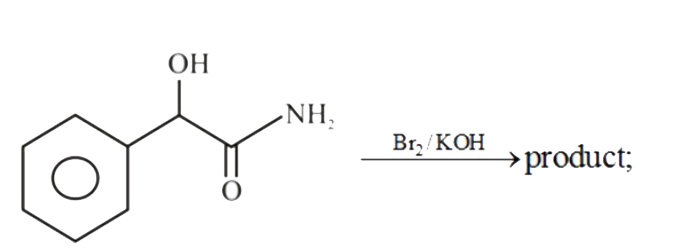Explain Hoffmann degradation of amides.
OR
Write a note on Hoffmann bromide reaction.
Text Solution
The conversion of amides into aminse in the presence of
bromine and alkali is known as Hoffmann degradation of amides. An
important characteristic of this reaction is that an amine with one
carbon less than those in the amide is formed. This reaction is an
example of molecular rearrangement and involves the migration of an
alkyl or aryl group from the carbonyl carbon to the adjacent nitrogen
atom.
For example,
(1) When propanamide is treated with bromine and aqueous or
alcoholic sodium hydroxide, ethanamine is obtained which has one
carbon atom less.
CH3−CPropanamideH2−O∣∣C−NH2+br2+4NaOH→
CH3−CEthanamineH2−NH2+Na2CO3+2NaBr+2H2O
(2) When benzamide is treated with bromine and aqueous of
alcoholic sodium Hydeoside, aniline is obtained.

|
Similar Questions
Knowledge Check
Hoffmann bromanide degradation is
ACondensation reactionBAddition reactionCMolecular rearrangement reactionDCoupling reactionHoffmann degradation of m-bromobenzamide gives
AanilineBm-bromoanilineCbromobenzeneDm-bromoethyl benzene
Product of this Hoffmann bromamide reaction is :APh−O∣∣C−CH3BPh - CHOC DPh−CH2−NH2
DPh−CH2−NH2

Product of this Hoffmann bromamide reaction is
View SolutionIn Hoffmann degradation of amide the correct order of reagent is :
View SolutionHoffmann Mustard Oil Reaction
View SolutionHoffmann Bromamide Degradation Reaction
View SolutionWhich of the following will not show Hoffmann bromide reaction?
View Solution
